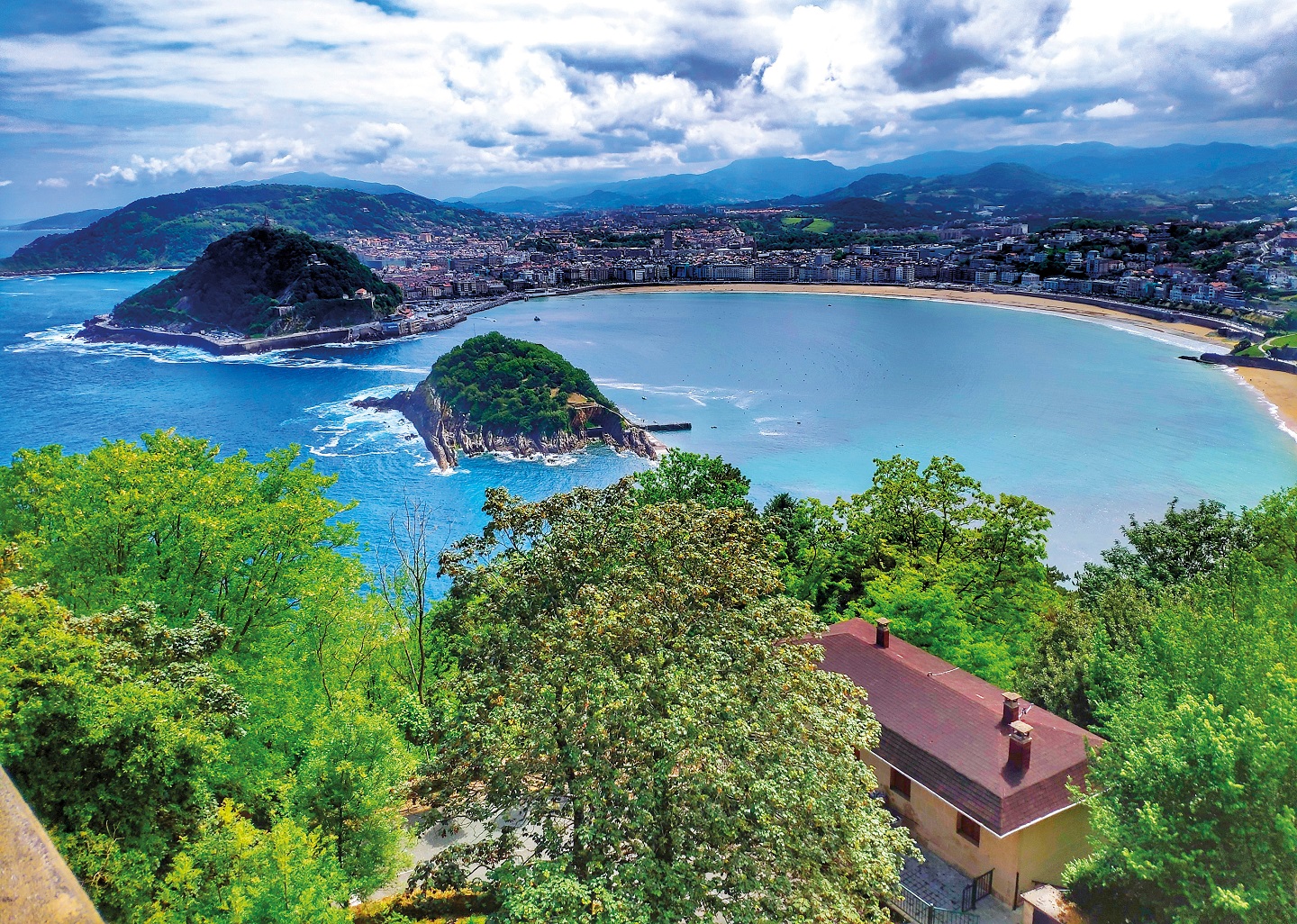
Seen from Mount Igueldo are Santa Clara island, Mount Urgull, La Concha bay and beach and San Sebastian city (All photos: Lee Yu Kit)
Nature was unfairly generous with San Sebastian, blessing it with an overabundance of gifts. The Urumea river runs through the northern Spanish city, emptying into the Bay of Biscay.
On either side of the estuary are white, sandy beaches. To the right, a shallow bay protected by two rocky headlands. On either end is where the beach meets the ocean, with a central rocky islet in the mouth of the bay. The sea meets land on a necklace of beach which, seen from a viewpoint, resembles a shell — hence its Spanish name, La Concha (the shell).
It is regarded as the finest beach in Spain and one of the best in Europe. It is the jewel in the crown of the city, which owes its reputation in no small part to the beach as a tourist haven since the mid-19th century, when Spanish royalty put it on the map by taking in the salubrious sea breeze and bathing in the shallow waters of the bay on the orders of the royal doctor.
La Concha is 1.5km of fine, golden sand. A rocky headland cleaves the beach into two unequal parts; the farther, a third the length of its more glamorous sister, is Ondarreta Beach. It is the (slightly) more remote, less glamorous section of the bay, although the same sea washes on to the same beach.
la_concha1.jpg
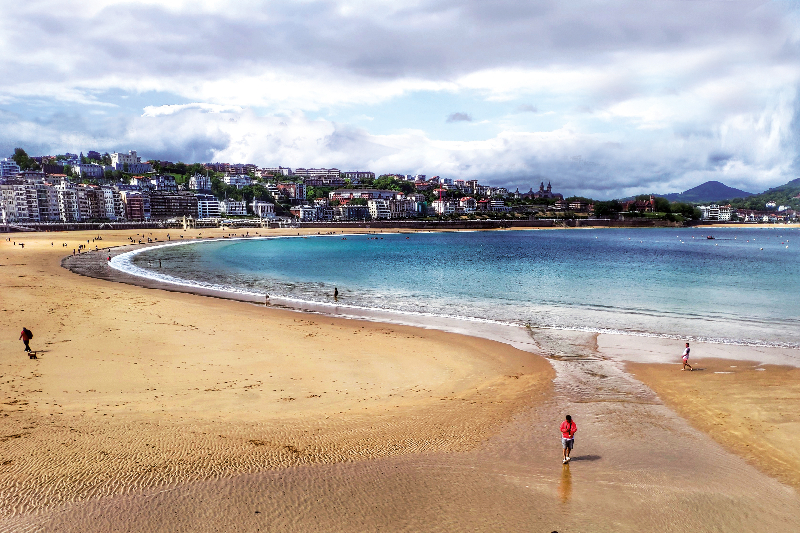
This is partly because San Sebastian Old Town shelters in the shadow of the rocky headland nearest the estuary. La Concha begins here — the section with arguably the best views, perfect for a leisurely promenade along the beachfront, to see and be seen.
La Concha possesses a Belle Epoque nostalgic charm, reinforced by the bathing house, the old-fashioned merry-go-round, the backdrop of 18th- and 19th-century buildings, and the La Concha railing — the white, cast-iron filigree railing that runs all the way along the beachfront to its furthest end. You half expect to see women with parasols, arms linked to moustached gentlemen in suits and hats, taking a stroll in the evening breeze at sunset.
Modern San Sebastian city sprawls along both sides of the Urumea, but the old town nestles comfortably at the base of the rocky headland, with the river to one side and La Concha, the other.
San Sebastian, or Donostia, its name in Euskara (the Basque language), traces its history to the 12th century, when its naturally fortified position and sheltered bay made it a fishing port of military importance. Although it has a long history, the old town of today dates to the 18th or 19th century, when the town was razed to the ground by attacking armies.
It exudes history and romance: a huddle of tall, yellow stone buildings crisscrossed by canyons of narrow, pedestrian streets bustling with people and commerce. Exploring the town yields many delights: plazas bordered by graceful buildings, old churches, markets, shops, cafés, businesses and restaurants.
ss_old_town.jpeg
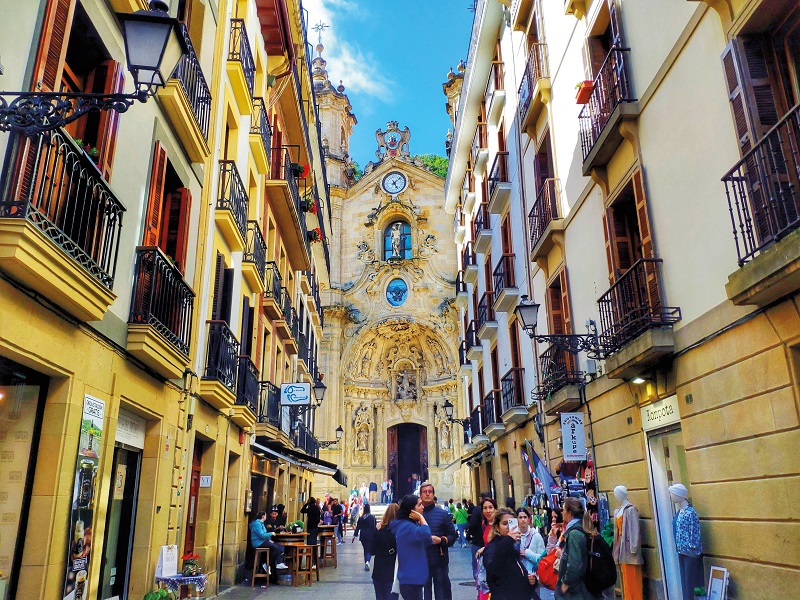
Nor is it just a pretty face. San Sebastian is a world-class dining destination. Other than Kyoto, Japan, the highest density of Michelin-starred restaurants in the world is in this region.
These restaurants are scattered across the old town and its surrounding neighbourhoods in a relatively small area in a city with a population of barely a couple hundred thousand people. It speaks of the locally sourced fresh seafood and vegetables, the innovativeness of the chefs and the Basque cuisine.
San Sebastian is part of Basque country, an autonomous region within Spain. Basque identity has a long history and a distinctive culture and language. Part of that culture is the cuisine, expressed and interpreted not only in haute cuisine but also the food of the everyday and working man. The Basque equivalent of tapas elsewhere in Spain is pintxos.
Originally a slice of baguette bread with some food pinned on it with a cocktail stick (the eponymous pintxo), the pintxo is synonymous with Basque country and has evolved into an explosion of mini-food creations, expressions of culinary creativity and small bites for odd times of the day between regular mealtimes.
The small bites are usually served in bars as well as high-end restaurants. Many bars specialise in one or two types of pintxos, the creations for which they are best known. Typically consumed with a glass of wine or beer, and in company, bar-hopping takes on a new meaning, moving from one pintxo bar to another.
ss_pintxo.jpeg
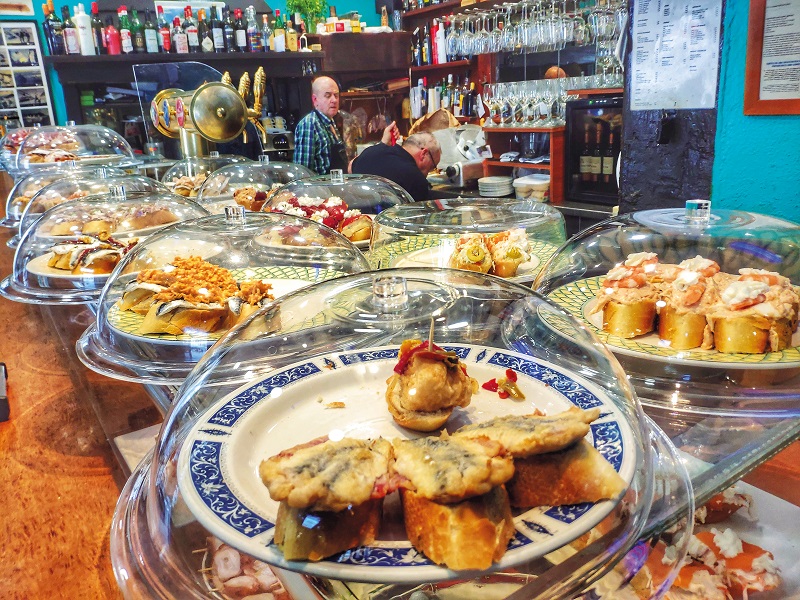
Wandering around the border of Old Town at La Concha takes the visitor from the periphery of the Mount Urgull rocky headland and the Paseo Nuevo promenade, which circumnavigates the headland, to the seaward section where waves crash spectacularly against dark rocks below, around to the Urumea estuary and back to the other side of town.
Footpaths wind upward into the densely forested slopes of Mount Urgull. The paths climb steadily, from rude stone steps in sections, past the English cemetery, to increasingly expansive views and eventually the 12-century fortification at the top, with thick stone walls punctuated by brass cannons. This is the Castillo de Mota.
The fortress has been repurposed with a museum within. The highlight is to ascend the narrow spiral staircase to the roof, stand under the towering 12m tall Sacred Heart statue at the top of the building, which overlooks La Concha and Old Town like a benign protective guardian angel, and have your breath taken away by the stunning views of the bay below.
A white filigree of water fringes the azure blue of the bay and laces the yellow arc of the beach. Modern San Sebastian city is spread out beyond the beach to the distant mountains. The eye is drawn outwards to the rocky forested islet of Santa Clara sitting in the middle of the mouth of the bay between the two rocky headlands. Beyond is the taller, more rugged sister headland of Mount Igueldo at the far end of La Concha and Ondarreta beaches.
The best way to reach Mount Igueldo is to take a leisurely promenade along the beach from Old Town, taking in the views of the sparkling sea breaking on the beach, with the wind whipping your hair into glorious disarray. Eventually, with Old Town and Mount Urgull receding in the distance, there is a funicular railway station at the base of Mount Igueldo.
ss_bridge.jpg
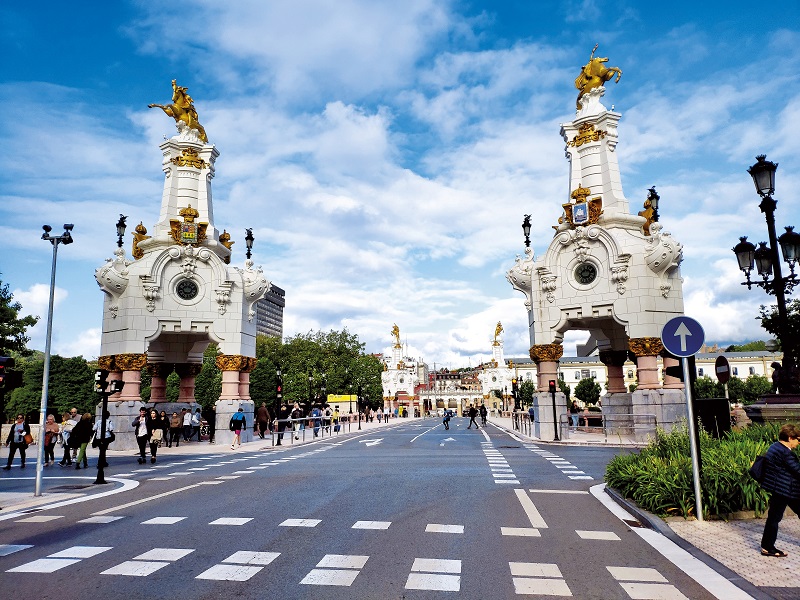
It is possible to hike up the mountain, but the funicular railway is such a blast from the past, a seeming anachronism from 1912, with steeply slanted wooden carriages. Ascending and descending carriages bypass each other on the short, steep railway to the summit.
It may be short, but the funicular sweeps the visitor into another dimension, the first inkling of which is a staggering view of the beach and San Sebastian below. There is a restaurant at the summit, the perfect romantic spot from which to take in the sunset or to pop a life-altering question to one’s inamorata.
The time-warp dimension at the top of Mount Igueldo continues with a theme park, not of the lung-bursting, eyeball-popping variety, but an honest-to-goodness old-fashioned fairground, with such vintage gems as a labyrinth, a house of twisted mirrors, a maze, a house of horrors and a wooden roller coaster, with ice cream and popcorn stands.
At the far, far end, beyond Old Town and Urumea estuary is the other beach of San Sebastian. Zurriola Beach is where the topography of the sea bed is such that the sea washes ashore in long, lazy breakers before exhausting its energy in explosive waves.
It is the perfect beach for the young and the young at heart to zip on wetsuits, grab a surfboard and head upwind to do battle with the waves. For the not-so-adventurous-at-heart, there is Sagues, the sea wall running along the periphery of the beach. It is an unadorned concrete wall on which to sit or lie, wind in your hair, to watch the action out at sea, as energising as a stroll along La Concha is relaxing.
ss_estuary.jpg
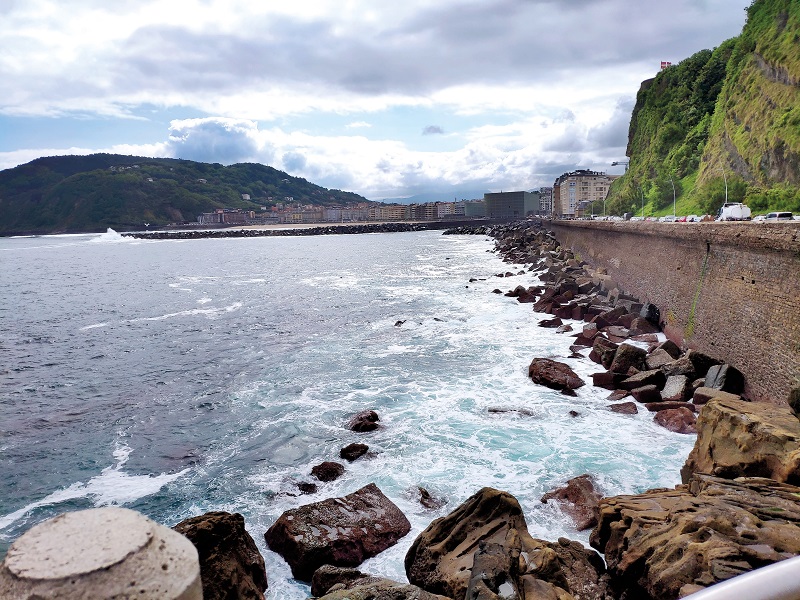
The walkway extends past a speed skating rink, volleyball court and play area, past Zurriola Beach, into the forested hills of Mount Ulia and beyond. The Camino del Norte route of the Camino de Santiago (Way of St James) walking route passes through this area to eventually end at Santiago de Compostela 700km to the west.
Behind Zurriola Beach stands the neighbourhood of Gros, with surfing schools and sports shops, but also cafés, world-class restaurants and pintxo bars. Thursdays are for pintxo-pote days in Gros, when the snacks and drinks are priced to draw the evening crowd.
Start with a scenically gorgeous setting of sea, sand and mountain, add liberal doses of culture and history, sprinkle with world-beating cuisine, stir well, and that’s how life’s just a beach in San Sebastian.
This article first appeared on July 10, 2023 in The Edge Malaysia.


